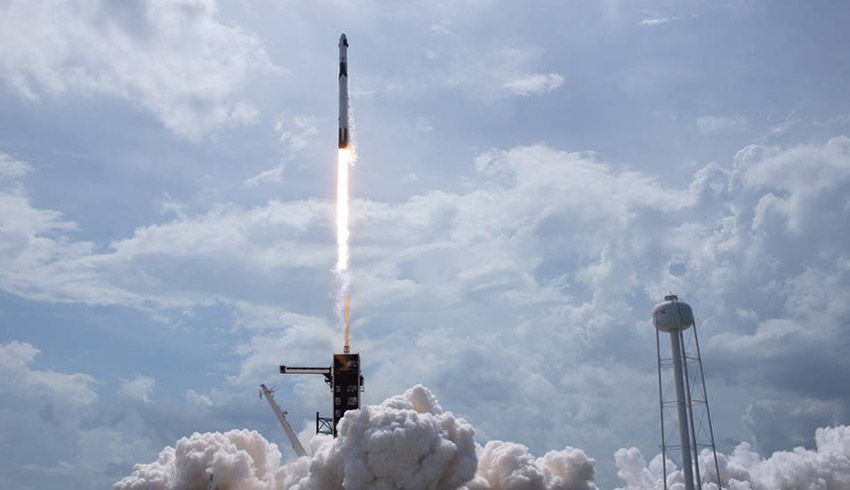The SpaceX Crew Dragon spacecraft carrying NASA astronauts Robert Behnken and Douglas Hurley lifted off on the company’s Falcon 9 rocket from Launch Complex 39A at NASA’s Kennedy Space Centre, Florida.
Known as NASA’s SpaceX Demo-2, the mission is an end-to-end test flight to validate the SpaceX crew transportation system, including launch, in-orbit, docking and landing operations.
NASA administrator Jim Bridenstine said, "Today a new era in human spaceflight begins as we once again launched American astronauts on American rockets from American soil on their way to the International Space Station, our national lab orbiting Earth."
This is SpaceX’s second spaceflight test of its Crew Dragon and its first test with astronauts aboard, which will pave the way for its certification for regular crew flights to the station as part of NASA’s Commercial Crew Program.
"I thank and congratulate Bob Behnken, Doug Hurley, and the SpaceX and NASA teams for this significant achievement for the United States. The launch of this commercial space system designed for humans is a phenomenal demonstration of American excellence and is an important step on our path to expand human exploration to the moon and Mars," Bridenstine added.
The program demonstrates NASA’s commitment to investing in commercial companies through public-private partnerships and builds on the success of American companies, including SpaceX, already delivering cargo to the space station.
Kathy Lueders, NASA’s Commercial Crew Program manager, added, "It’s difficult to put into words how proud I am of the people who got us here today. When I think about all of the challenges overcome – from design and testing, to paper reviews, to working from home during a pandemic and balancing family demands with this critical mission.
"I am simply amazed at what the NASA and SpaceX teams have accomplished together. This is just the beginning; I will be watching with great anticipation as Bob and Doug get ready to dock to the space station tomorrow, and through every phase of this historic mission."
Behnken and Hurley will work with SpaceX mission control to verify the spacecraft is performing as intended by testing the environmental control system, the displays and control system, and by manoeuvring the thrusters, among other things.
The first docking manoeuvre began Sunday, and the spacecraft will begin its close approach to the station early Monday morning.
Crew Dragon is designed to dock autonomously, but the crews onboard the spacecraft and the space station will diligently monitor the performance of the spacecraft as it approaches and docks to the forward port of the station’s Harmony module.
The Crew Dragon being used for this flight test can stay in orbit about 110 days, and the specific mission duration will be determined once on station based on the readiness of the next commercial crew launch.
The operational Crew Dragon spacecraft will be capable of staying in orbit for at least 210 days as a NASA requirement.
At the conclusion of the mission, Behnken and Hurley will board Crew Dragon, which will then autonomously undock, depart the space station, and re-enter Earth’s atmosphere. Upon splashdown off Florida’s Atlantic coast, the crew will be picked up by the SpaceX recovery ship and returned to the dock at Cape Canaveral.
NASA’s Commercial Crew Program is working with SpaceX and Boeing to design, build, test and operate safe, reliable and cost-effective human transportation systems to low-Earth orbit.
Both companies are focused on test missions, including abort system demonstrations and crew flight tests, ahead of regularly flying crew missions to the space station. Both companies’ crewed flights will be the first times in history NASA has sent astronauts to space on systems owned, built, tested and operated by private companies.

